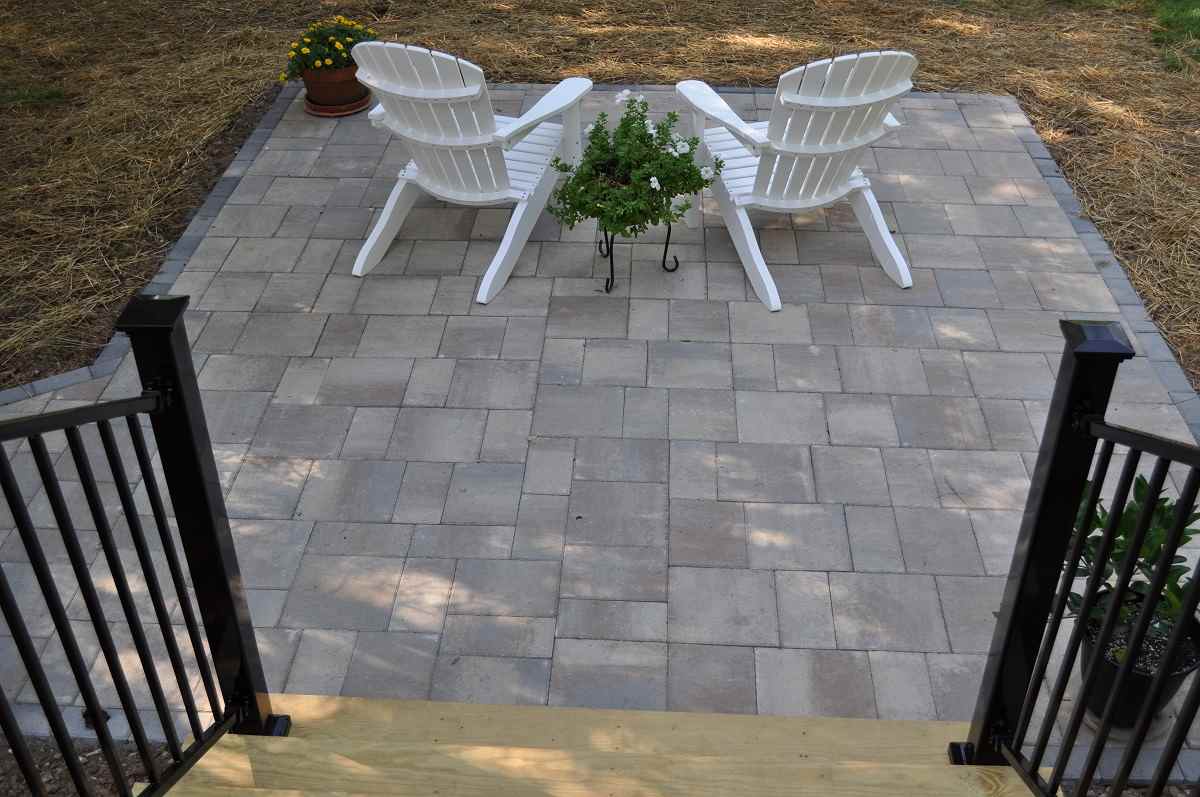
EXTENSION

LOFT CONVERSION

BATHROOM FITTERS

TILING

PLUMBING

ELECTRIC

DRIVEWAYS

PATIOS
What is a Patio Fall, and How Much Fall Should a Patio Have?
Table of Contents


A patio fall or slope is the degree of decline or incline of the patio structure. The fall is required for adequate drainage of water from the patio surface, which would otherwise accumulate and damage the integrity of your patio. The fall is measured as an angle or as a percentage of elevation.
Why is Patio Fall Important?
The patio slope or fall ensures that any water from rain or spillage is not accumulated on the patio’s surface. If the angle of the fall is not enough or too steep, water can accumulate and damage the structure over time. Water pools will also make your patio look unpleasant and prevent you from using it during wet weather.
What Damage Can Water Do to Patios?
If the patio fall is not adequate and water is allowed to accumulate over the patio surface, it can damage your patio in several ways.
- Cracking: Accumulated water will seep into existing cracks and will freeze during cold weather. This will cause the expansion of existing cracks and also create new ones. Excessive cracking will damage and deteriorate the patio structure and make it useless over time.
- Staining: If water cannot drain from your patio surface and is allowed to sit for extended periods, the water pools will stain the patio surface. The stains will be too noticeable, especially on patio surfaces constructed from natural stone or concrete.
- Erosion: Patios constructed from materials like limestone or sandstone will erode over time if the patio fall is inadequate and prevents adequate drainage.
- Mould and Mildew: Frequent water pools over your patio surface will easily promote mould and mildew, damaging your patios and making them look unpleasant.
- Structural Damage: Patios will settle down or sink because of ineffective water drainage, as over time, water will cause structural damage to the foundations of your patio.
How to Calculate the Right Patio Slope
The right patio slope has to be determined with as much accuracy as possible if you want the patio to last long. This includes determining the degree of decline/incline relative to the structure, which will allow effective drainage. The typical steps involved in this process are mentioned below.
- Determining the Water Flow Direction: This is a visual observation which can help you determine the direction in which water flows which will let you identify the location of the patio slope.
- Calculating the Slope: The fall is typically measured in terms of a percentage or an elevation angle. As a thumb rule, a fall of 2% or 1/4 inch per foot is generally considered the minimum slope for adequate water drainage, while a highly recommended approach is to keep a fall of 5% or 1/2 inch per foot. To calculate the slope, you have to divide the height difference between the low and high ends of the patio by the total length of the patio. As an example, if the length of your patio is 20 feet and the height difference between the low and high ends is 2 inches, the slope would be:
2 inches ÷ 20 feet = 0.1 inches per foot
To convert this to a percentage, multiply by 100:
0.1 inches per foot x 100 = 1% slope
- Checking the Slope: Using a water level to check it throughout the patio’s surface after calculating the gradient.
- Make Adjustments: If you find that the fall is inadequate for water drainage, you can alter it by removing or adding material from the patio base or changing the slope of the surrounding landscape.
Are you looking for a professional construction company in your Town


Benefits of Ensuring the Right Patio Fall
Patios are supposed to provide you with utility and add to your home’s aesthetic value. However, when building patios, one should ensure that the best practices are followed, including ensuring the proper patio slope. An adequate slope will provide the following:
- Proper Drainage: An adequate patio fall will allow water to drain off the patio surface properly. It will prevent water accumulation and protect your patio from water damage, giving it a long life.
- Improved Durability: The right patio fall will protect your patio from erosion, staining, and cracking, prolonging its lifespan and improving its overall durability.
- Enhanced Safety: A slippery or uneven patio surface is a safety hazard, especially when the weather is wet. Properly sloped patios will prevent slips and falls, making your patio safe for everyone.
- Increased Functionality: Patios with adequate drainage can be used for a broader range of activities, making them more functional and allowing you to enjoy your outdoor living space.
- Improved Curb Appeal: Well-designed patios will enhance the aesthetic appeal of your home, add value to your property and make your home more attractive to potential buyers.
How to Alter Your Patio for a Better Slope?
Patios may lose shape and integrity over time, demanding specific alterations or an entirely new build. In cases where alterations can be made, a few steps can help you recreate your patio slope.
- Assess the Current Slope: Use a level or a long straight edge to determine the existing slope of your patio. If the slope is inadequate or uneven, you must make adjustments to improve it.
- Remove Existing Surface Material: If you are working with a concrete or brick patio, you may need to remove some existing surface material to create the desired slope. Use a jackhammer or chisel to break up the existing surface material and remove it from the patio area.
- Prepare the Base: Once the surface material has been removed, prepare the patio base by compacting the soil and adding a layer of gravel or crushed stone. This will provide a stable foundation for the new surface material.
- Add New Surface Material: Depending on your preferences and budget, you can choose from various surface materials, such as concrete, pavers, or natural stone. Ensure the new surface material is installed with the proper slope for proper drainage.
- Check the Slope: Use a level or a long straight edge to check the slope of the new patio surface, making any necessary adjustments to ensure that the slope is even and consistent throughout.
- Finish the Surface: Once the surface material has been installed and the slope has been adjusted, finish the surface by adding any desired finishing touches, such as sealant, sand, or mortar.


